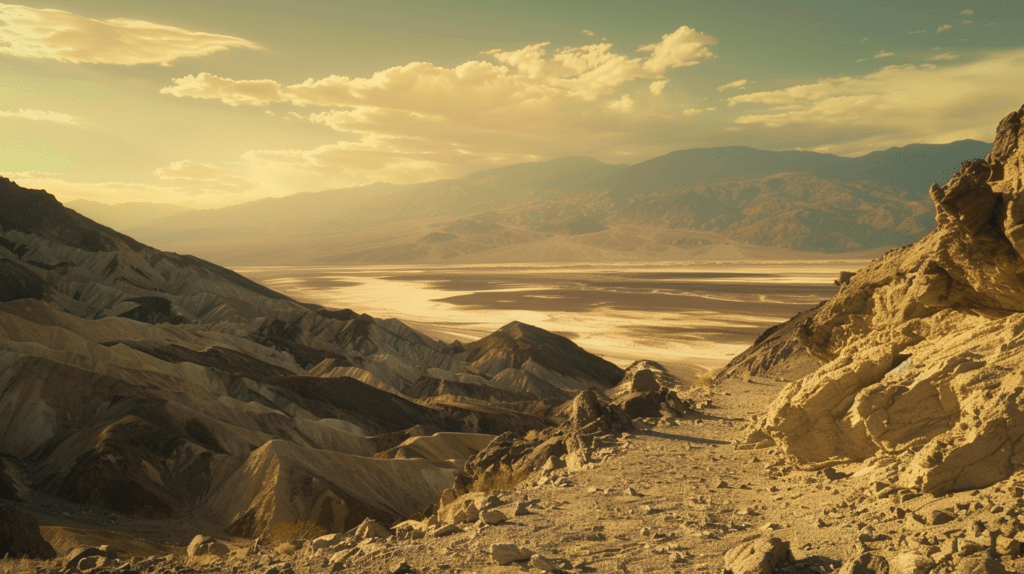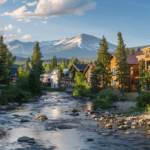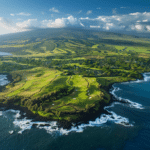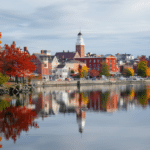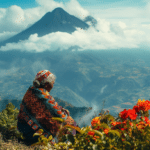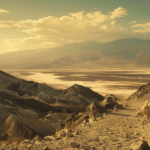Located within the arid landscapes of California and Nevada, Death Valley National Park beckons adventurers with its stark beauty and rugged terrain. Despite its foreboding name, this vast expanse offers a plethora of activities for nature enthusiasts, thrill-seekers, and those seeking solace amidst breathtaking vistas. From exhilarating outdoor adventures to tranquil indoor attractions, there’s something for everyone in this unique desert landscape.
Table of Contents
ToggleTop Rated Activities
- Hiking: Traverse the diverse trails ranging from easy strolls to challenging treks through canyons and over sand dunes.
- Stargazing: Experience the awe-inspiring night sky away from city lights at one of the park’s designated stargazing spots.
- Photography: Capture the otherworldly landscapes, shifting sand dunes, and dramatic sunsets that make Death Valley a photographer’s paradise.
- Wildlife Viewing: Spot unique desert wildlife such as bighorn sheep, coyotes, and desert tortoises in their natural habitat.
- Scenic Drives: Cruise along iconic routes like Artist’s Drive and Badwater Road, taking in panoramic views at every turn.
Outdoor Adventures
- Off-Roading: Explore remote corners of the park by embarking on off-road adventures along rugged backcountry trails.
- Camping: Pitch a tent under the star-filled sky at one of the park’s campgrounds, immersing yourself in the tranquility of the desert night.
- Rock Climbing: Test your skills on the park’s rocky cliffs and formations, offering challenges for climbers of all levels.
- Backpacking: Embark on multi-day backpacking trips into the wilderness, carrying everything you need to survive in this unforgiving environment.
- Cycling: Pedal along scenic routes like the Twenty Mule Team Canyon Road, soaking in the desert landscapes at your own pace.
Best Camping in Death Valley
Death Valley National Park offers a range of camping options, allowing visitors to immerse themselves in the stark beauty of the desert landscape. Here are some of the best camping options within the park:
- Furnace Creek Campground: Situated in the heart of Death Valley, Furnace Creek Campground is the park’s largest campground and offers both tent and RV camping options. With its central location, it provides easy access to popular attractions such as Badwater Basin and Zabriskie Point. Amenities include picnic tables, fire pits, and flush toilets, making it a convenient choice for both families and individual campers.
- Mesquite Spring Campground: Located in the northern part of the park near Scotty’s Castle, Mesquite Spring Campground offers a quieter and more secluded camping experience. Surrounded by towering mesquite trees, it provides a shady retreat from the desert sun. Campsites are equipped with picnic tables and fire rings, and pit toilets are available. This campground is ideal for those seeking a peaceful atmosphere and proximity to hiking trails such as the Mesquite Flat Sand Dunes.
- Texas Spring Campground: Situated near the Furnace Creek Visitor Center, Texas Spring Campground offers convenient access to amenities and attractions while still providing a rustic camping experience. Campsites are nestled among desert vegetation, offering a degree of privacy and solitude. Amenities include picnic tables, fire pits, and potable water. From Texas Spring Campground, visitors can easily explore nearby points of interest such as Harmony Borax Works and Golden Canyon.
- Sunset Campground: Tucked away near Furnace Creek Ranch, Sunset Campground is a smaller and more intimate camping option within the park. Its location provides stunning views of the surrounding mountains and desert landscape, particularly during sunrise and sunset. Campsites are equipped with picnic tables and fire rings, and flush toilets are available nearby. Sunset Campground offers a peaceful atmosphere away from the crowds, making it ideal for those seeking a tranquil camping experience.
- Backcountry Camping: For those seeking a more adventurous camping experience, backcountry camping is permitted in designated areas throughout Death Valley National Park. Permits are required and can be obtained from park ranger stations. Backcountry camping allows visitors to truly immerse themselves in the wilderness and experience the solitude of the desert landscape. Popular backcountry camping areas include Cottonwood Canyon, Saline Valley, and the Eureka Dunes.
Whether you prefer the convenience of established campgrounds or the solitude of backcountry camping, Death Valley National Park offers camping options to suit every preference. With its stunning scenery and unique desert environment, camping in Death Valley promises an unforgettable outdoor experience.
Best Hiking Trails
Death Valley National Park is a hiker’s paradise, boasting a diverse range of trails that traverse its rugged terrain and showcase its breathtaking natural beauty. Here are some of the best hiking trails in the park:
- Golden Canyon Trail: This iconic trail winds through a colorful canyon adorned with golden-hued walls, sculpted by centuries of erosion. The relatively easy hike leads to the stunning Red Cathedral, a towering rock formation that glows fiery red in the afternoon sun. The trail is approximately 2.7 miles round trip and offers spectacular views of the surrounding landscape.
- Badwater Basin Salt Flats: Explore the otherworldly landscape of the lowest point in North America on the Badwater Basin Salt Flats trail. The flat and accessible path leads across vast salt flats, offering panoramic views of the surrounding mountains and the unique salt formations that characterize the area. Interpretive signs along the trail provide insights into the geology and ecology of Death Valley. This easy hike is suitable for all skill levels and is approximately 1 mile round trip.
- Telescope Peak Trail: For more experienced hikers seeking a challenge and stunning panoramic views, the Telescope Peak trail is a must-do. Starting from the Mahogany Flat Campground, the trail climbs steadily through pine forests before ascending to the summit of Telescope Peak, the highest point in Death Valley at 11,049 feet. Along the way, hikers are treated to sweeping vistas of the valley below and the surrounding mountain ranges. The trail is approximately 14 miles round trip and requires proper preparation due to elevation gain and potentially extreme weather conditions.
- Mesquite Flat Sand Dunes: Experience the surreal beauty of rolling sand dunes on the Mesquite Flat Sand Dunes trail. This moderate hike takes you through undulating sands, where the ever-shifting landscape creates a sense of endless wilderness. The trail offers opportunities for photography, especially during sunrise and sunset when the dunes are bathed in golden light. It is approximately 2-3 miles round trip, depending on how far you choose to explore.
- Mosaic Canyon Trail: Embark on a journey through a narrow slot canyon adorned with intricate rock formations on the Mosaic Canyon trail. The trail meanders through polished marble walls, revealing a mosaic of colors and textures carved by water and time. Highlights include the impressive Mosaic Canyon Dry Falls and the opportunity to witness the forces of nature at work in this geological wonderland. The trail is approximately 4 miles round trip and offers a moderate level of difficulty.
- Dante’s View Trail: For unparalleled panoramic vistas of Death Valley, hike the Dante’s View trail to the viewpoint overlooking the vast expanse below. The trail leads to a dramatic overlook perched high above the valley floor, offering sweeping views of the salt flats, mountain ranges, and distant peaks. The trail is relatively short and easy, making it accessible to hikers of all skill levels. It is approximately 0.5 miles round trip from the parking area to the viewpoint.
- Titus Canyon Trail: Experience the rugged beauty of Death Valley’s backcountry on the Titus Canyon trail, a scenic drive that can also be explored on foot. The trail winds through a narrow canyon flanked by towering cliffs, offering glimpses of ancient rock formations and petroglyphs along the way. Hiking the Titus Canyon trail allows you to fully immerse yourself in the remote wilderness of Death Valley and appreciate its geological wonders up close. The trail is approximately 3.5 miles one way, but can be hiked as an out-and-back or combined with a scenic drive through the canyon
Best Indoor Attractions
- Visitor Centers: Learn about the park’s geology, history, and ecology through interactive exhibits and informative ranger talks.
- Borax Museum: Explore the rich mining history of Death Valley and the role of borax in shaping the region’s economy.
- Furnace Creek Visitor Center: Discover the natural wonders of Death Valley through educational displays and ranger-led programs.
- Scotty’s Castle: Step back in time at this historic mansion, filled with intriguing stories of its eccentric former owner.
- The Oasis at Death Valley: Relax and rejuvenate at this oasis resort, complete with luxurious accommodations, dining options, and a spring-fed pool.
Local Beaches
- Badwater Basin: Marvel at the vast salt flats of Badwater Basin, the lowest point in North America, resembling a surreal white beach.
- Mesquite Flat Sand Dunes: Wander through undulating sands at Mesquite Flat, where the dunes create an illusion of a desert beach.
- Salt Creek Boardwalk: Explore the unique ecosystem of Salt Creek, home to rare pupfish, while walking along the boardwalk trail.
Memorable Day Trips
- Rhyolite Ghost Town: Explore the remnants of a once-booming gold mining town, now preserved as a ghost town just outside the park.
- Zabriskie Point: Take in panoramic views of the eroded badlands and colorful rock formations from this iconic viewpoint.
- Titus Canyon: Drive or hike through the stunning Titus Canyon, a narrow gorge flanked by towering cliffs and ancient rock formations.
Best Local Eats
- The Inn at Death Valley Dining Room: Indulge in gourmet cuisine amidst stunning desert views at this historic dining venue.
- The Last Kind Words Saloon: Experience the Old West ambiance while enjoying hearty meals and refreshing drinks at this rustic saloon.
- Stovepipe Wells Village Restaurant: Savor classic American fare at this casual eatery, known for its burgers, ribs, and homemade pies.
Top Hotels
- The Inn at Death Valley: Experience luxury in the heart of the desert at this historic hotel, offering elegant accommodations and top-notch amenities.
- Stovepipe Wells Village: Stay in rustic yet comfortable rooms or campground sites, conveniently located near popular attractions.
- Furnace Creek Ranch: Enjoy a cozy retreat at this family-friendly resort, featuring Western-themed accommodations and recreational facilities.
Death Valley National Park offers a wealth of opportunities for exploration, adventure, and relaxation amidst its rugged beauty. Whether you’re scaling rocky peaks, marveling at surreal landscapes, or simply soaking in the tranquility of the desert, this remarkable destination promises an unforgettable experience for all who venture within its boundaries. So pack your bags, hit the road, and prepare to discover the wonders of Death Valley.

